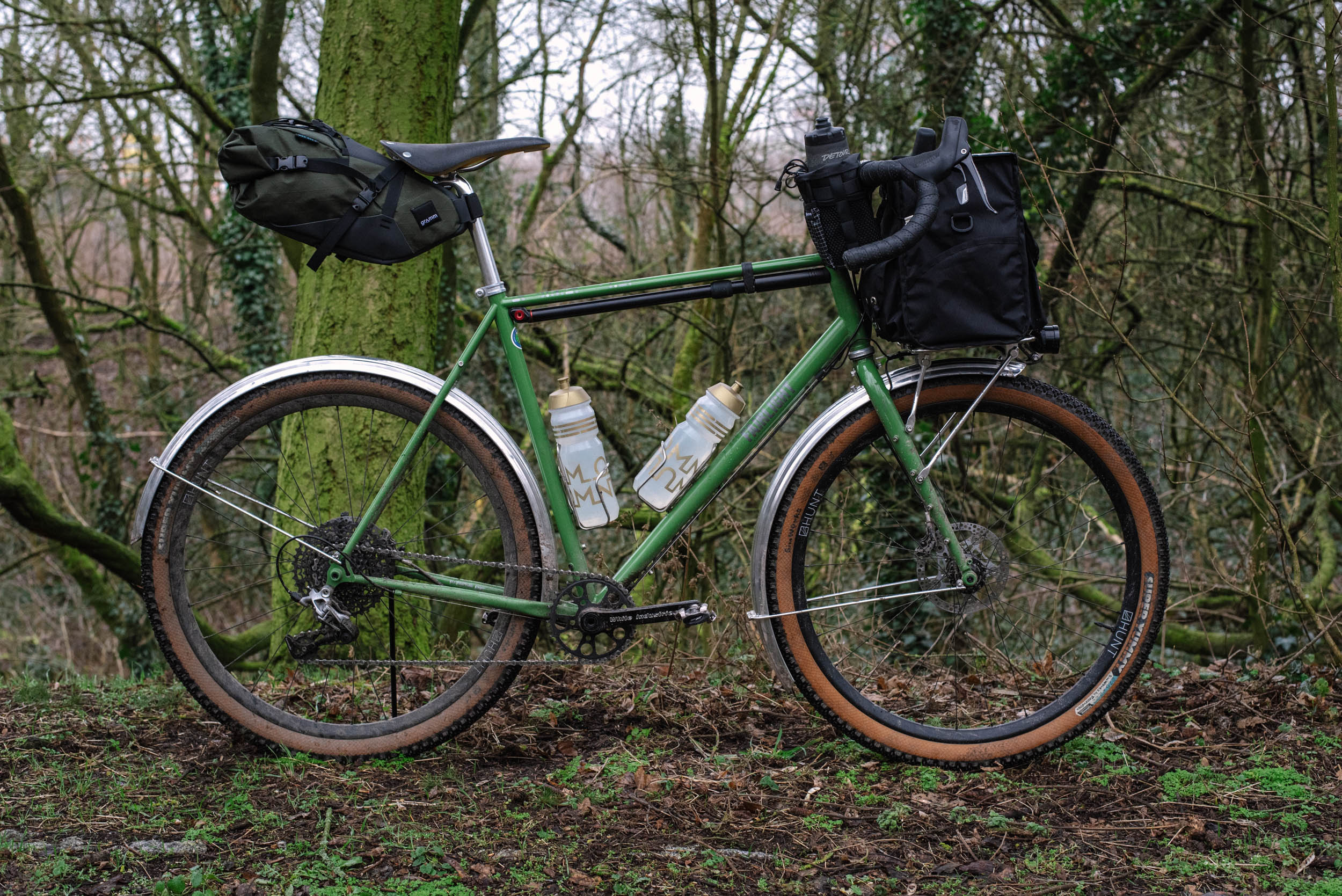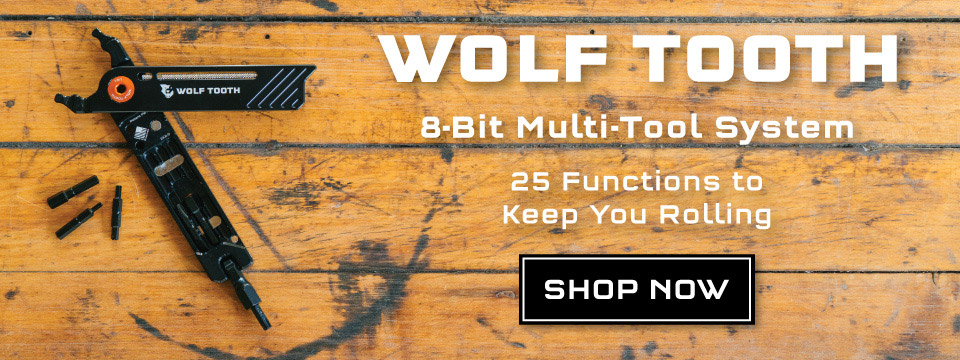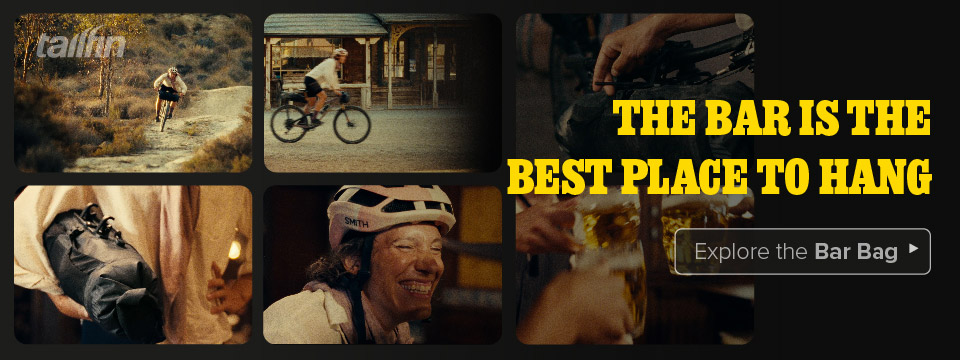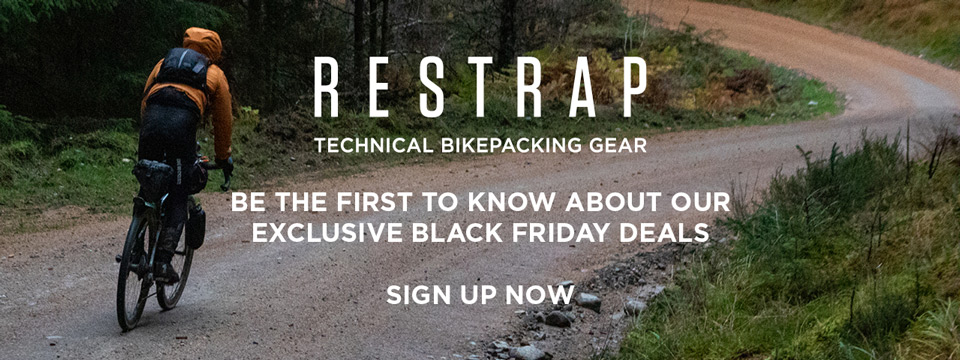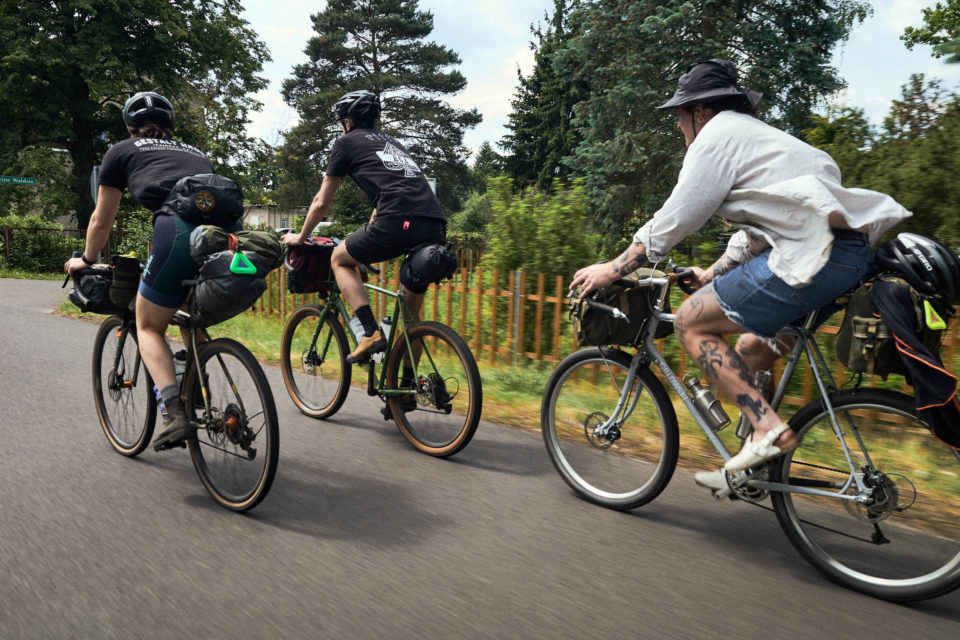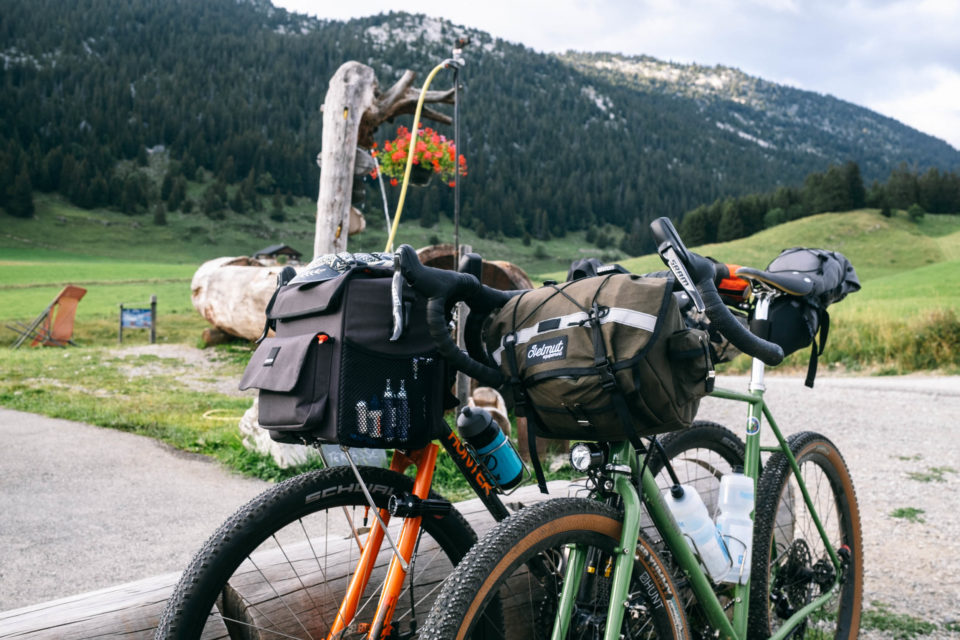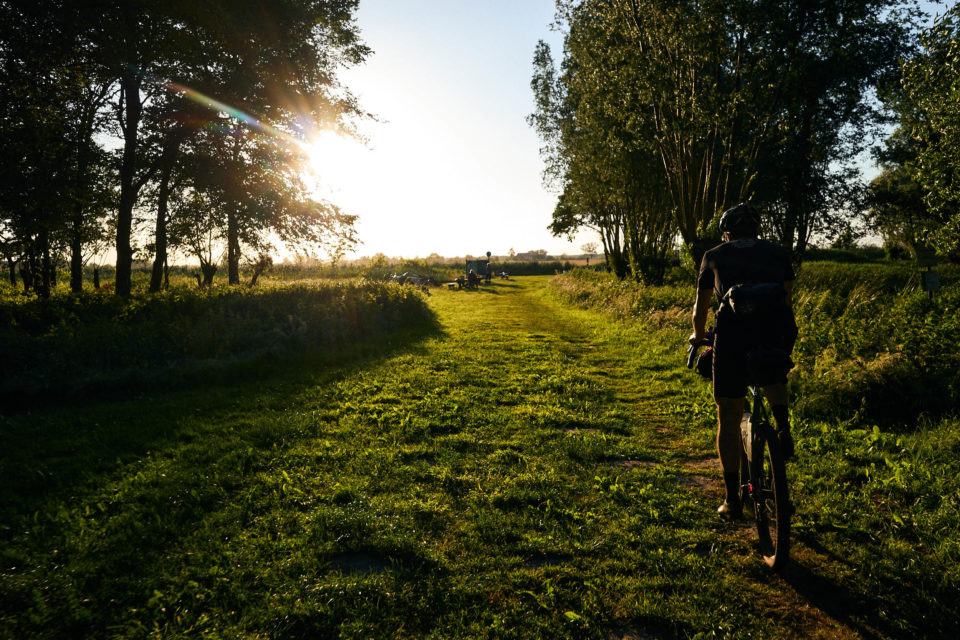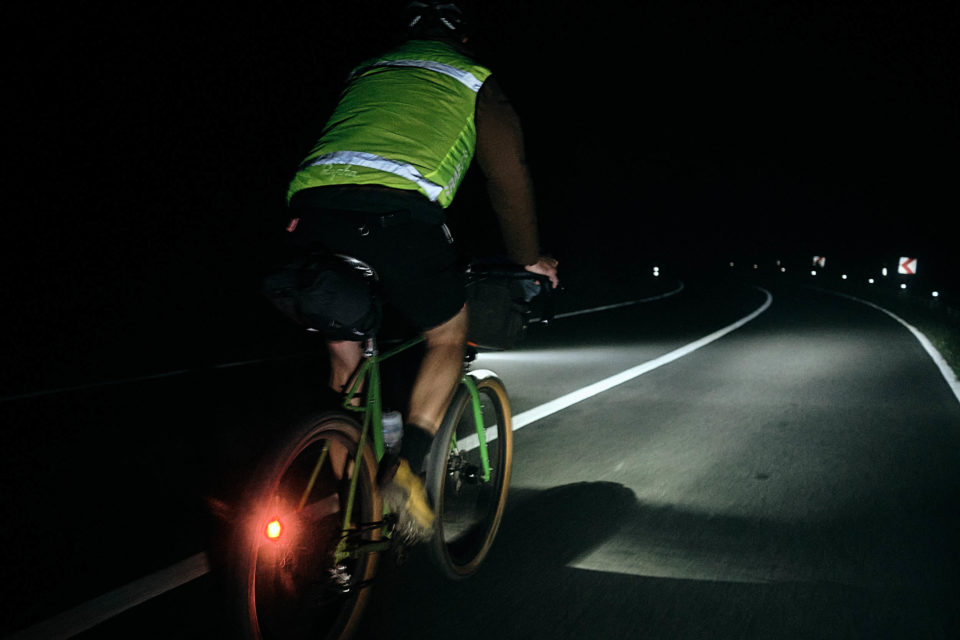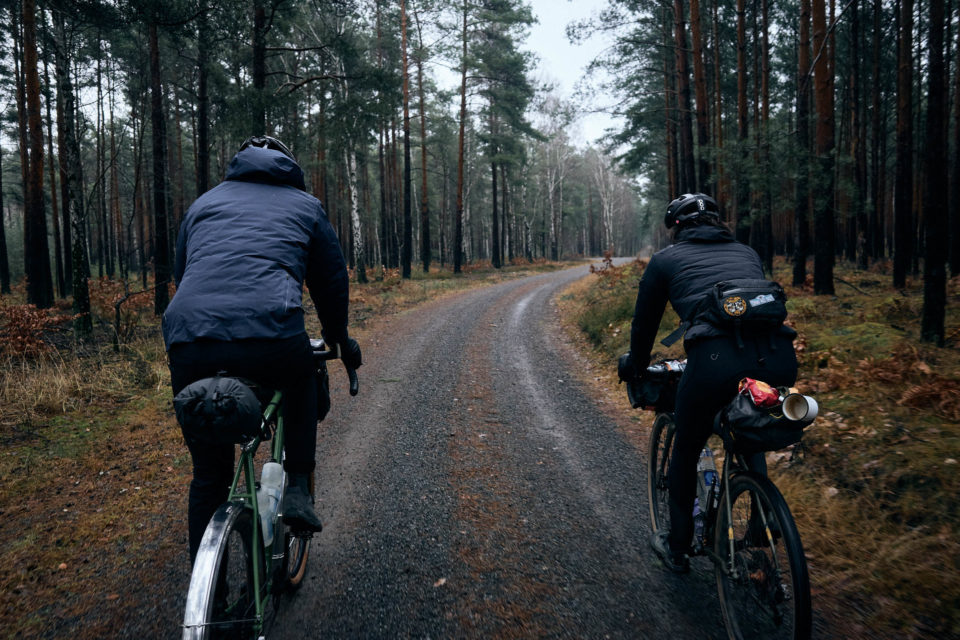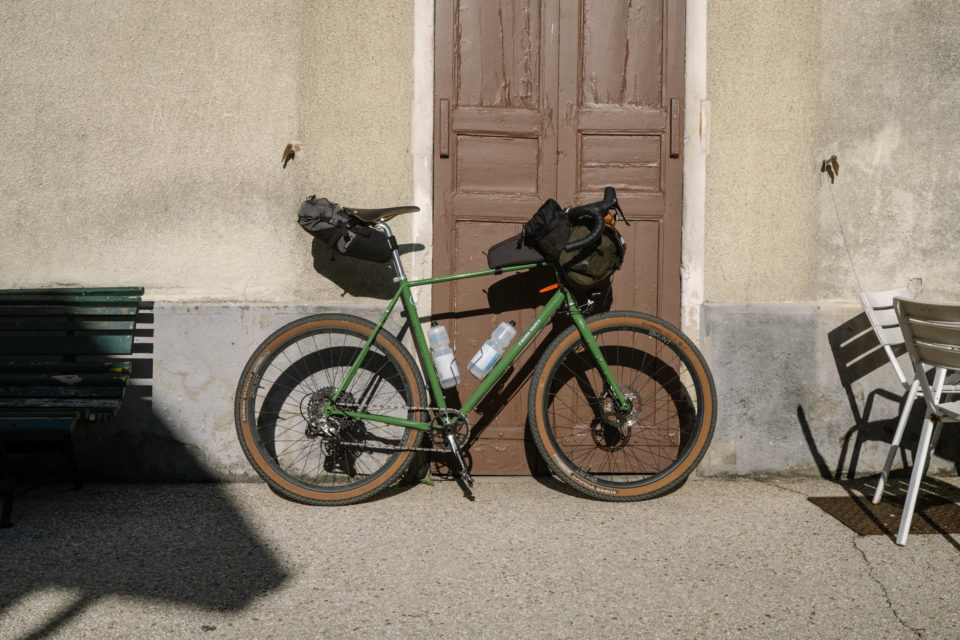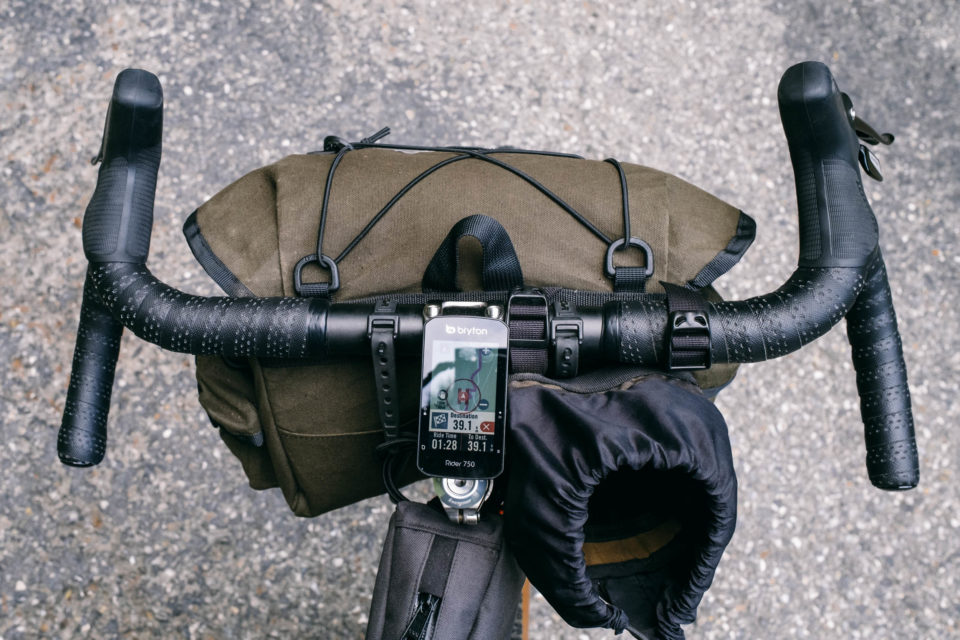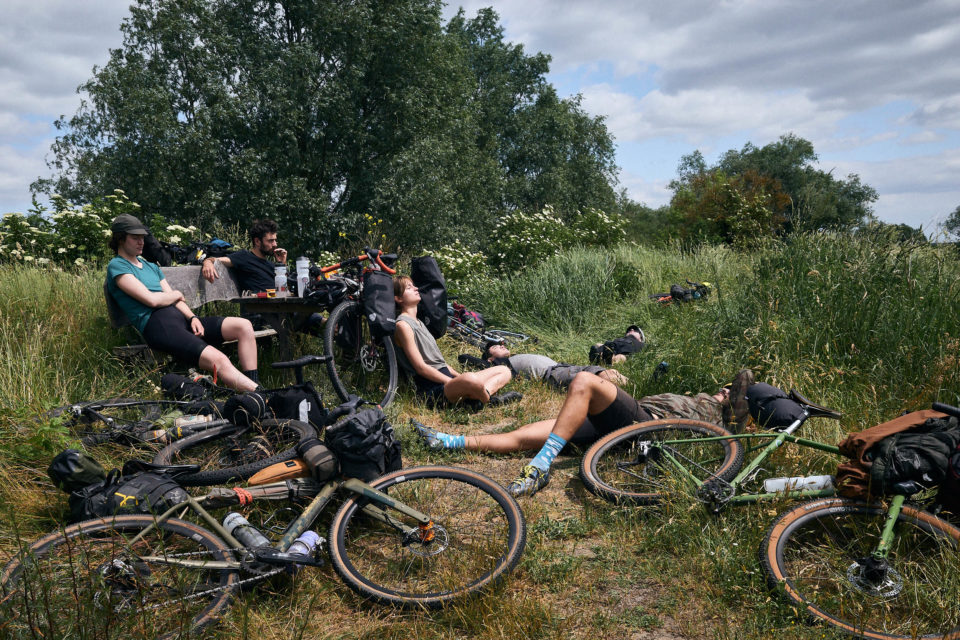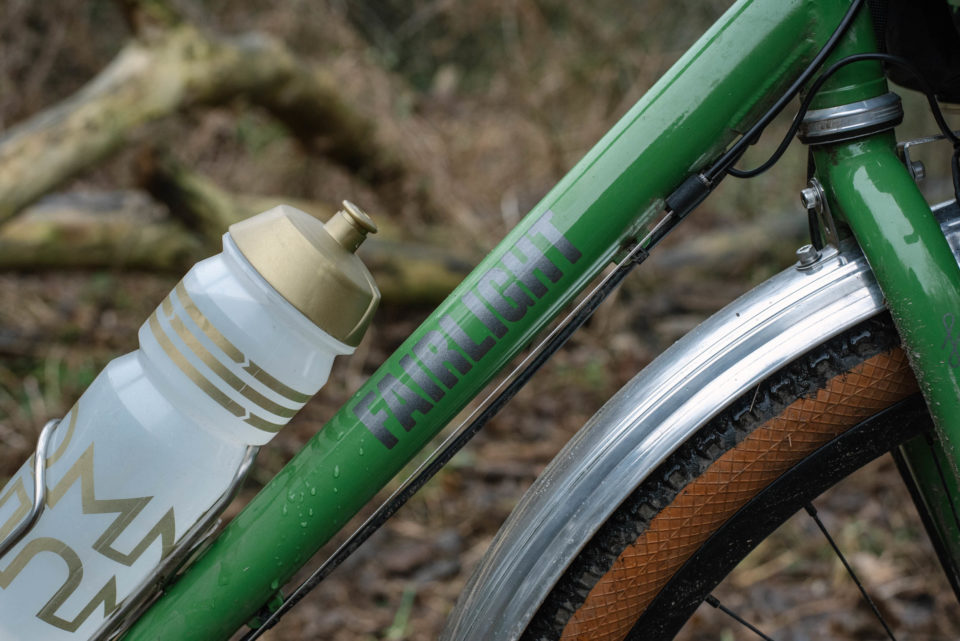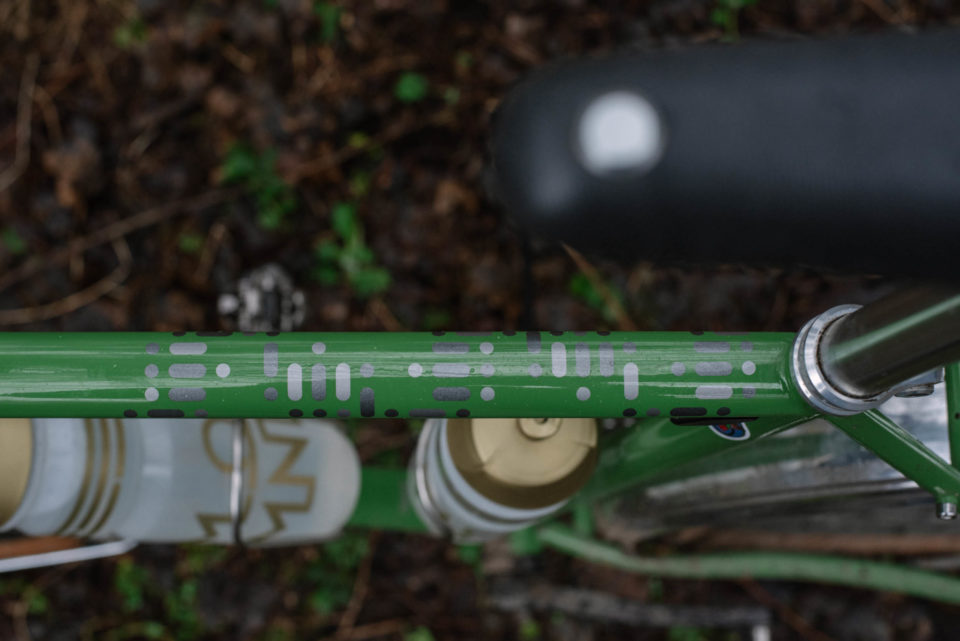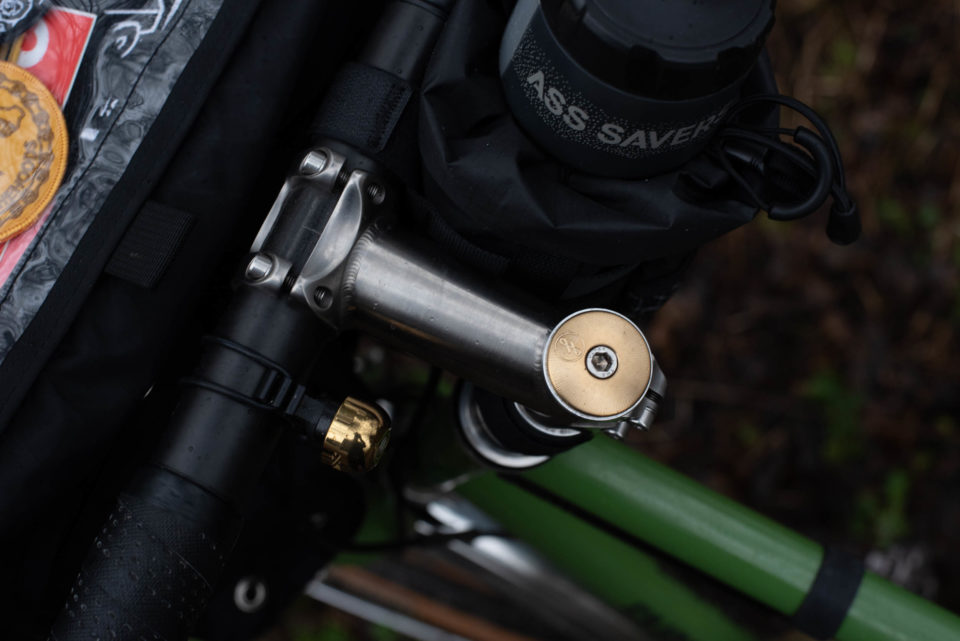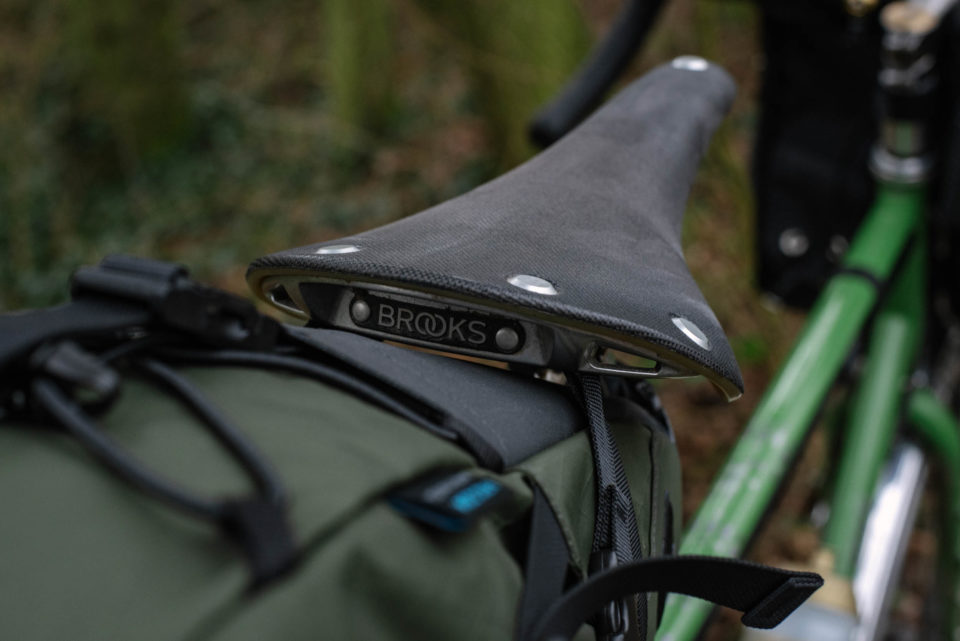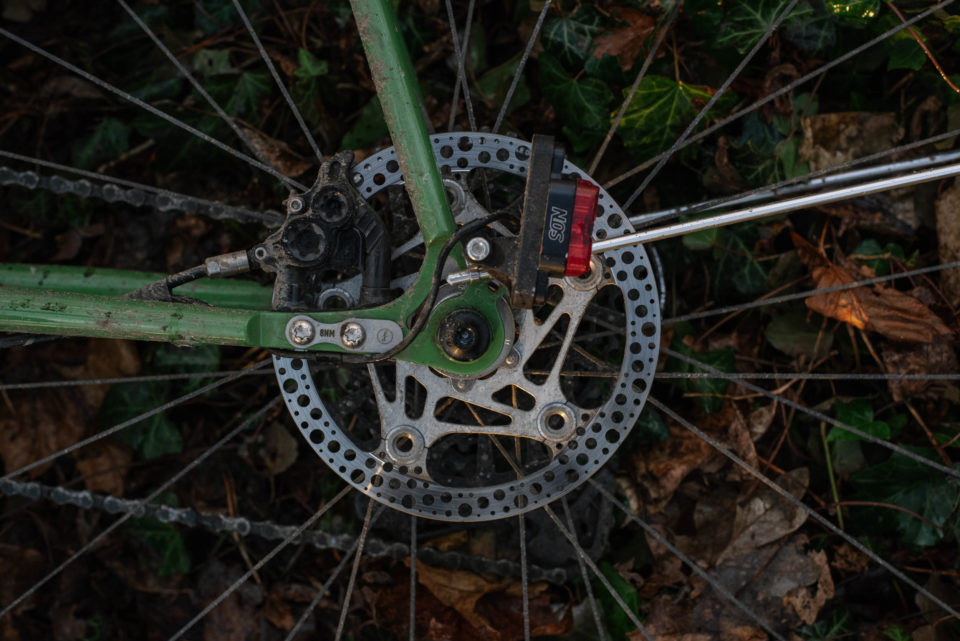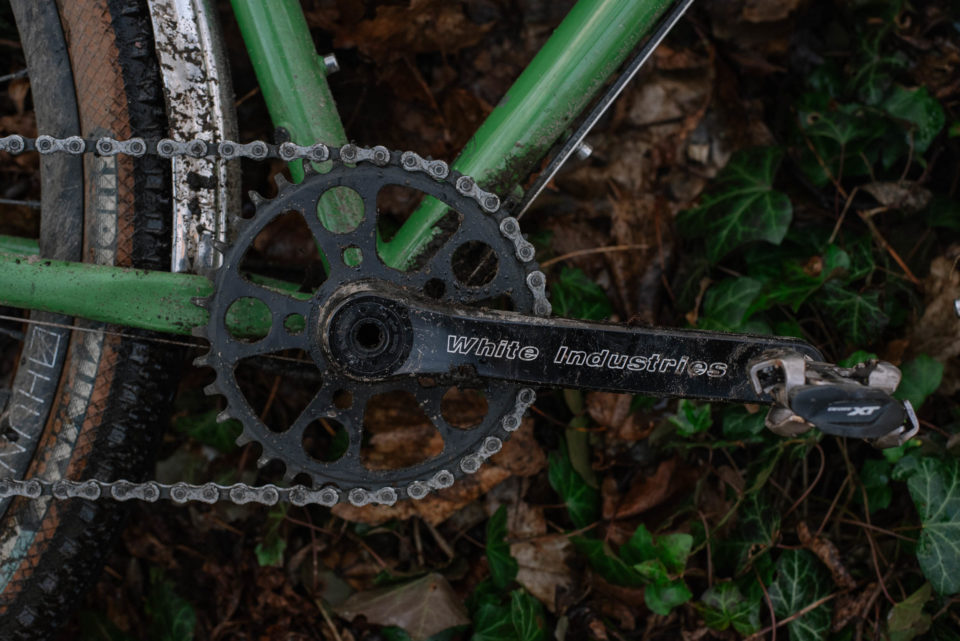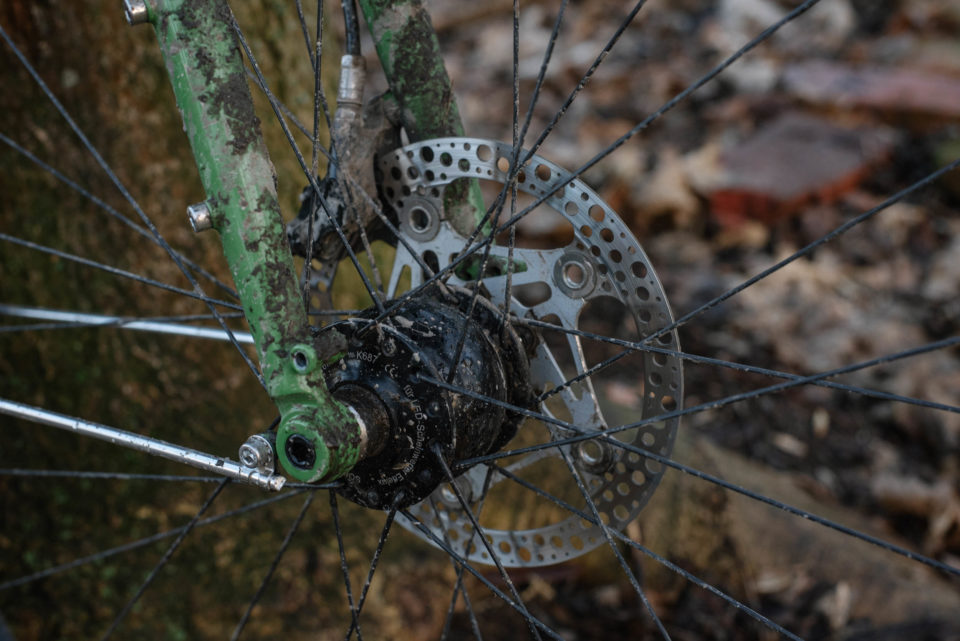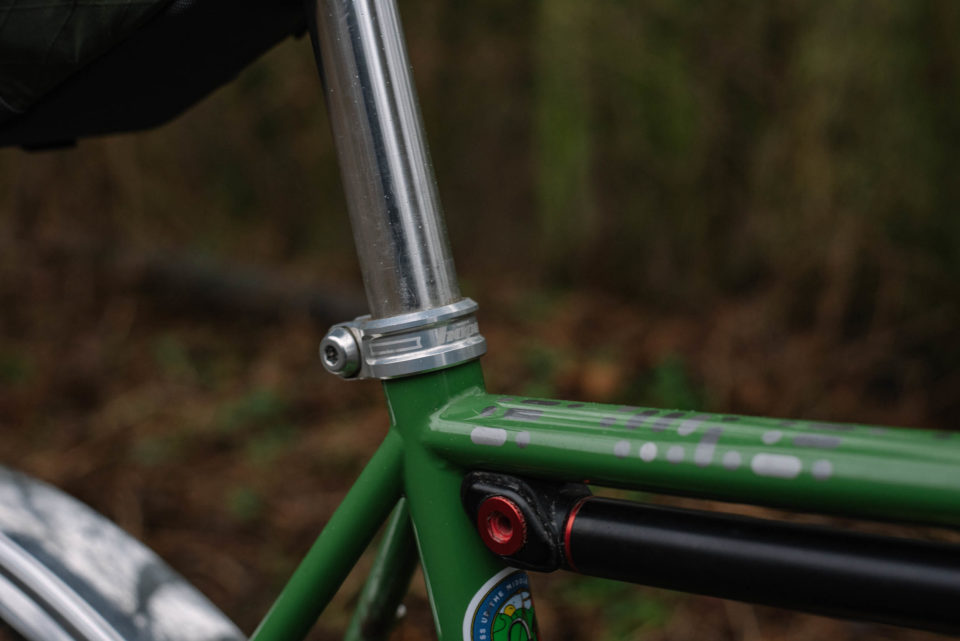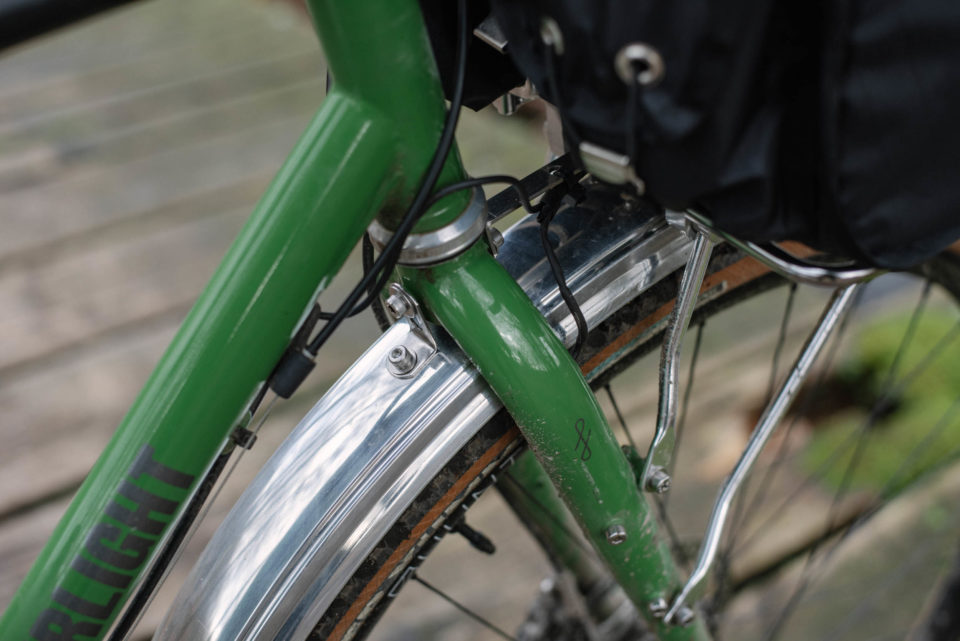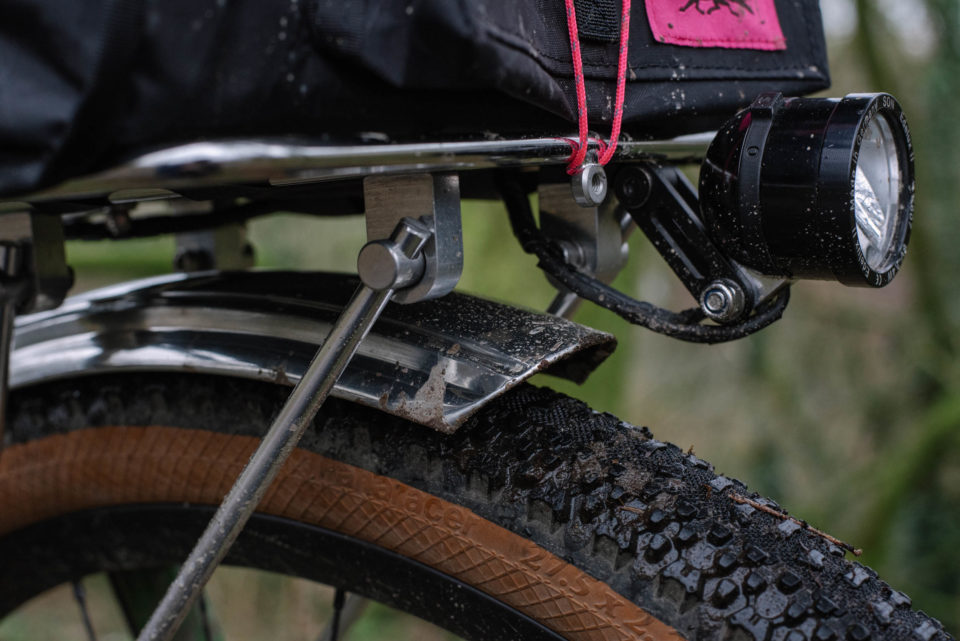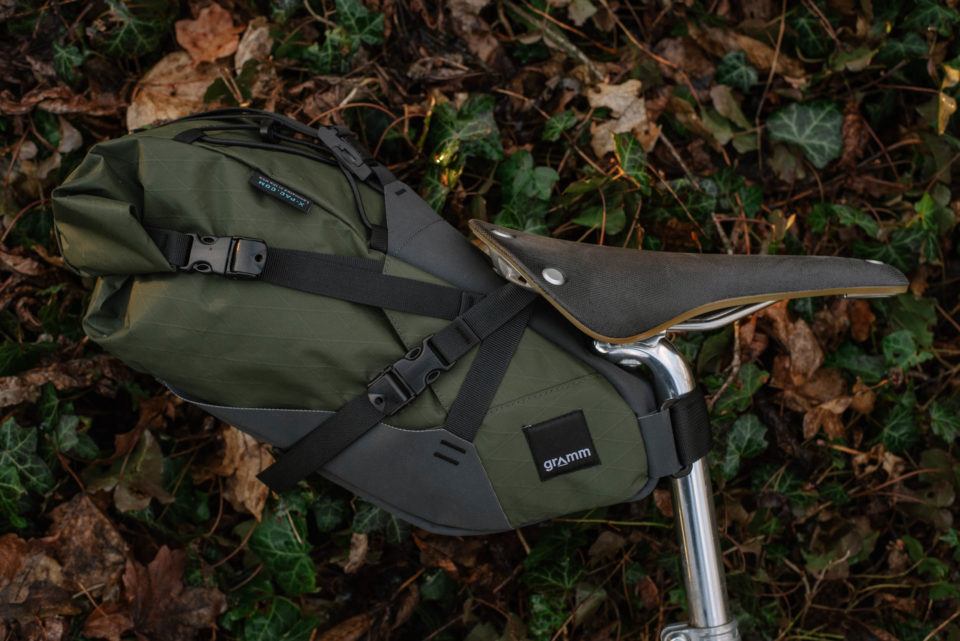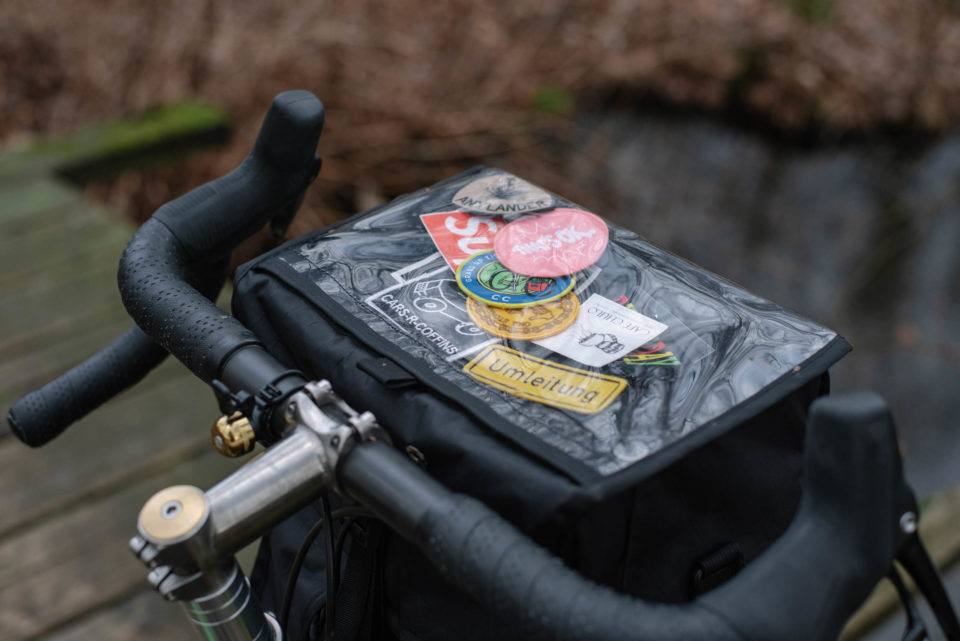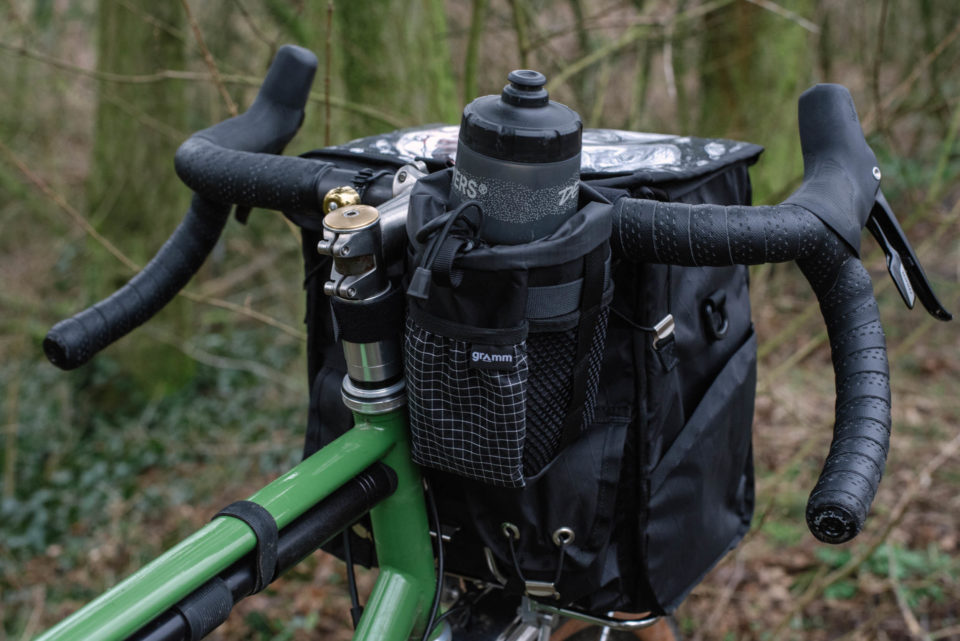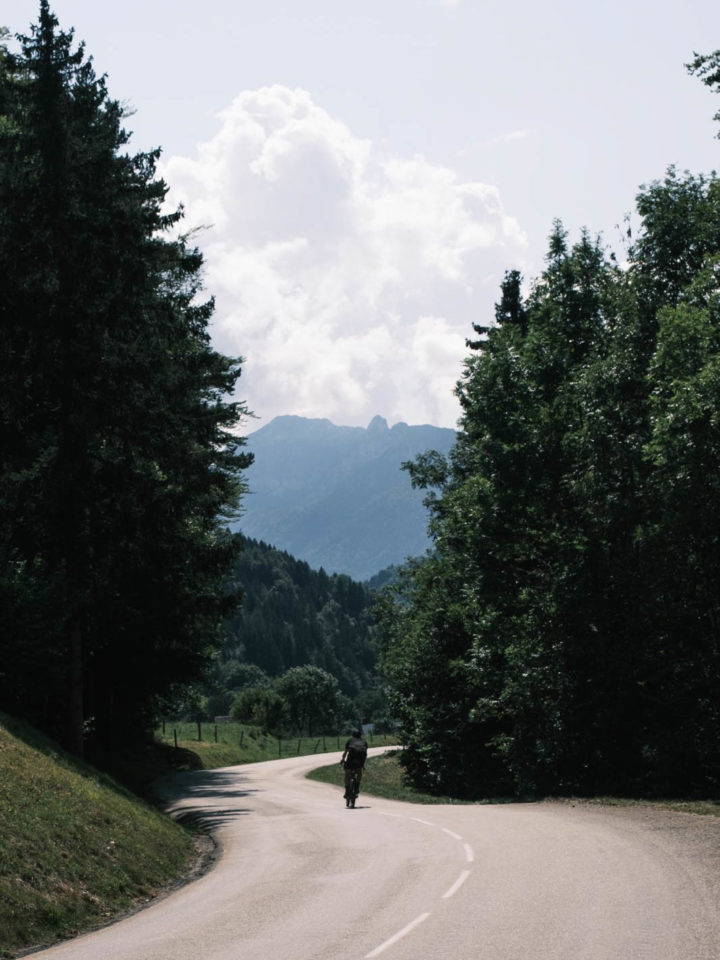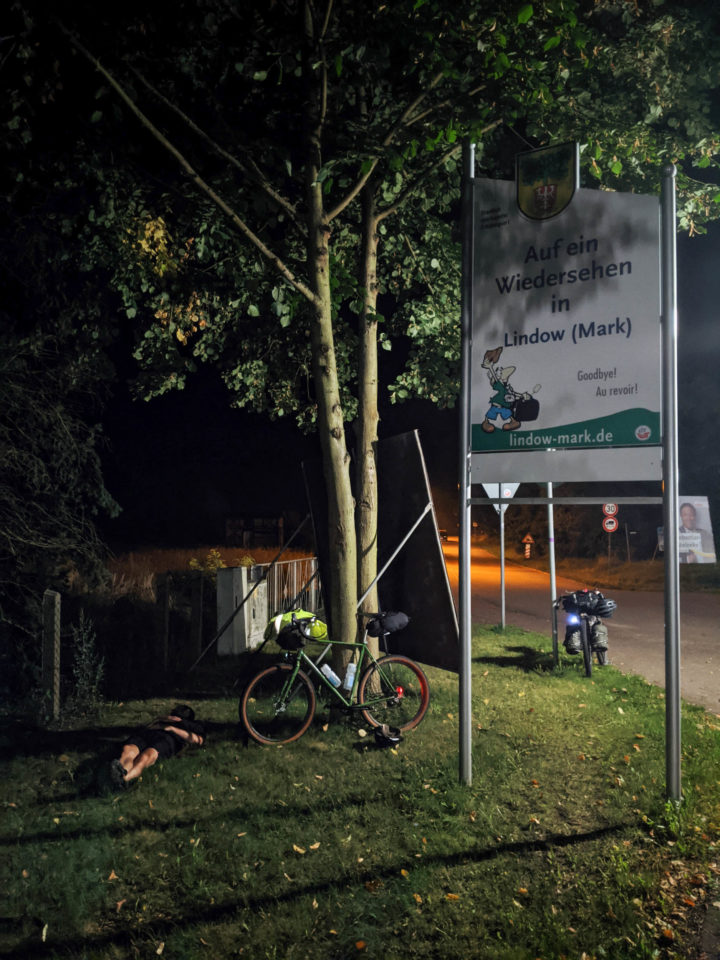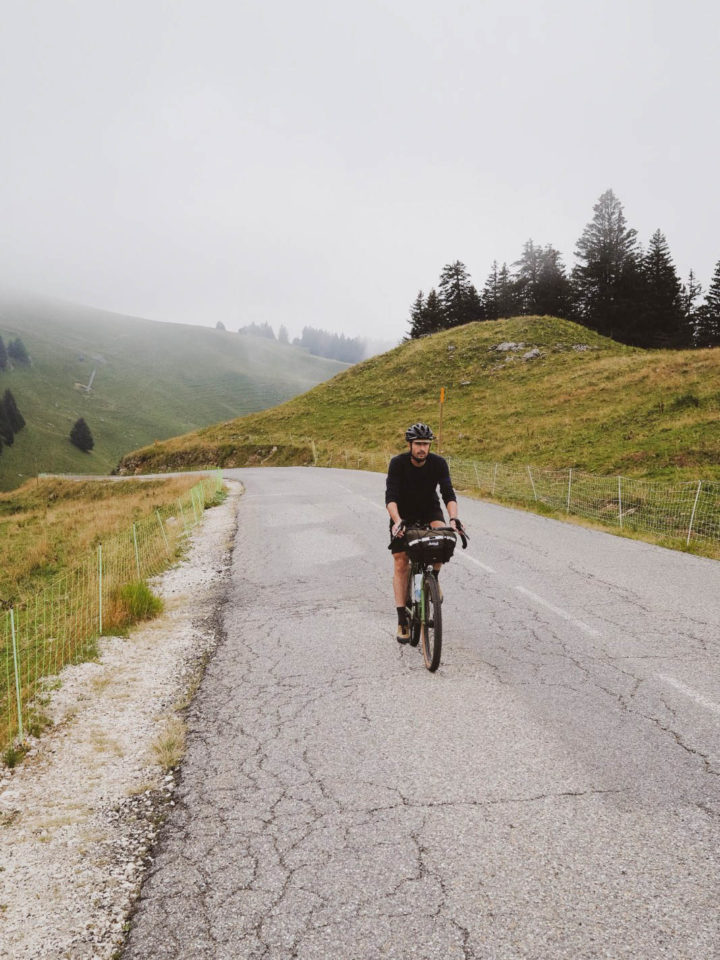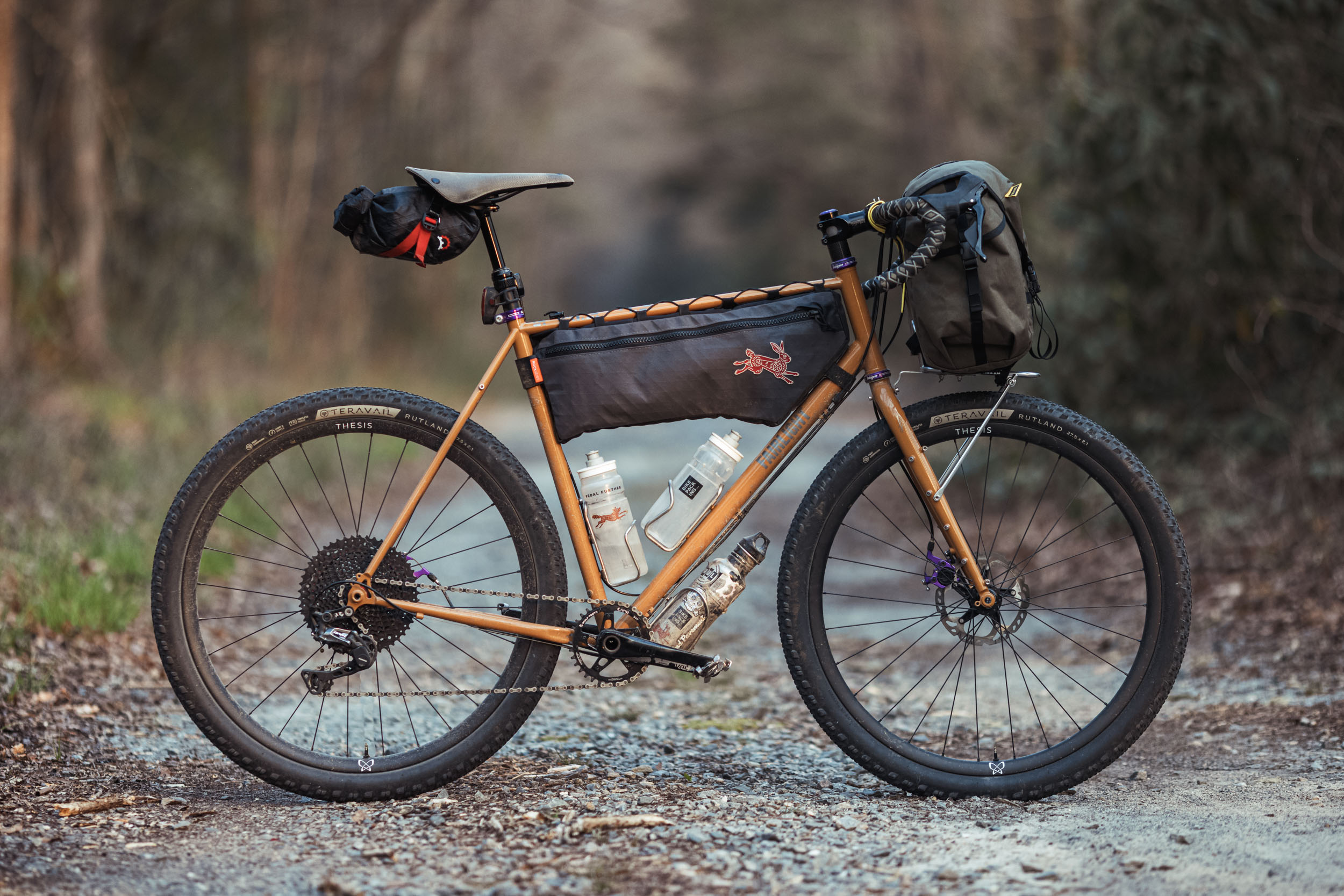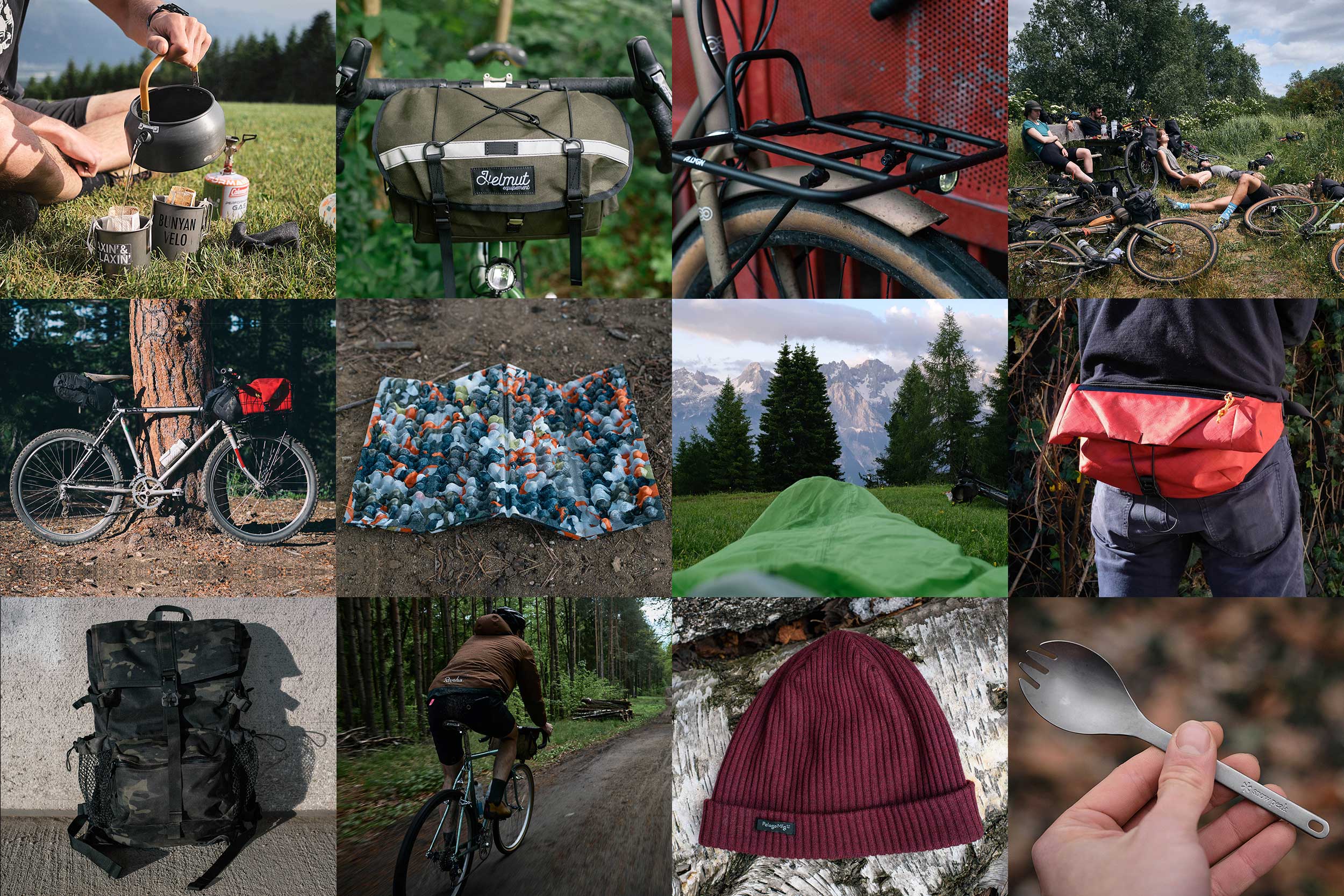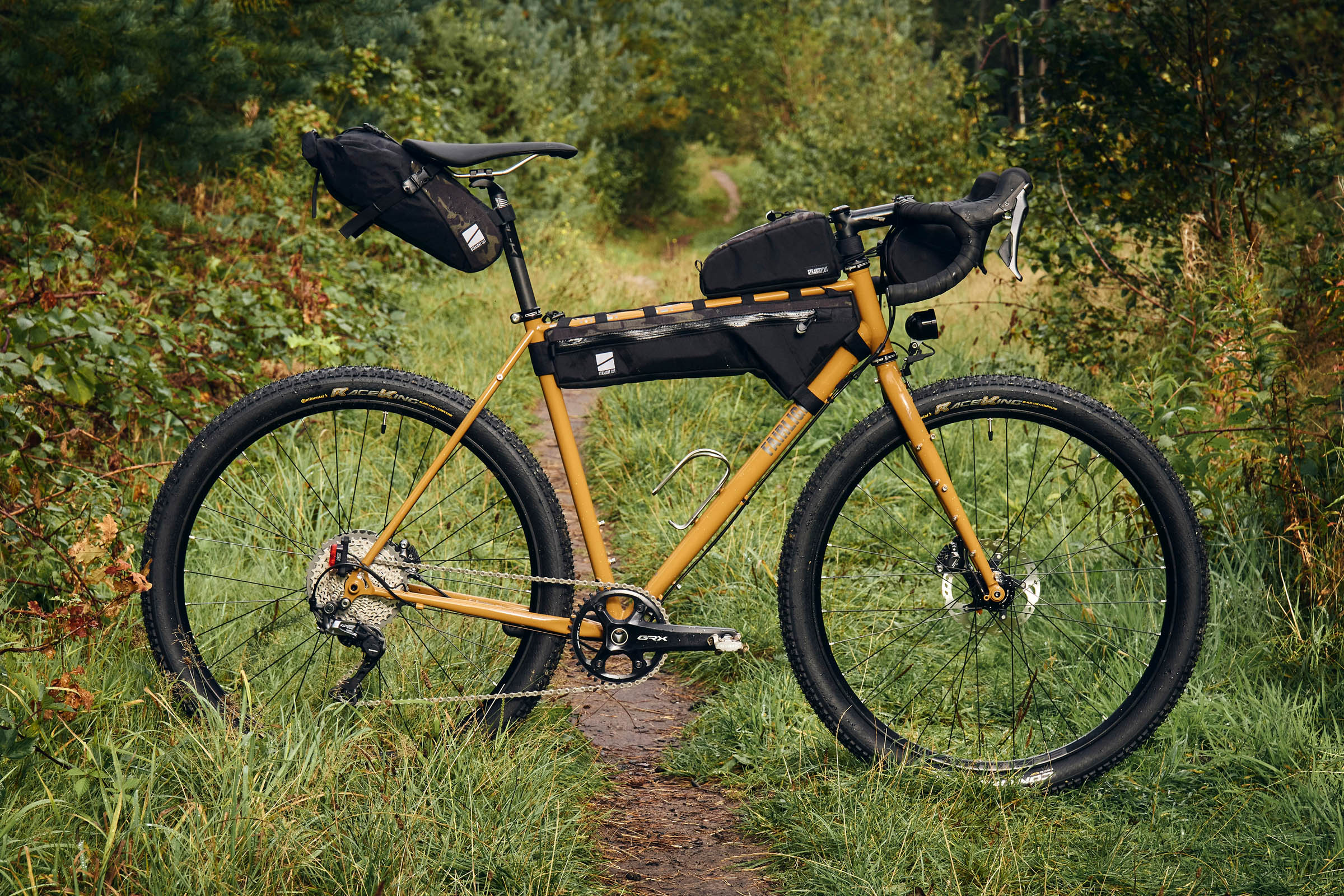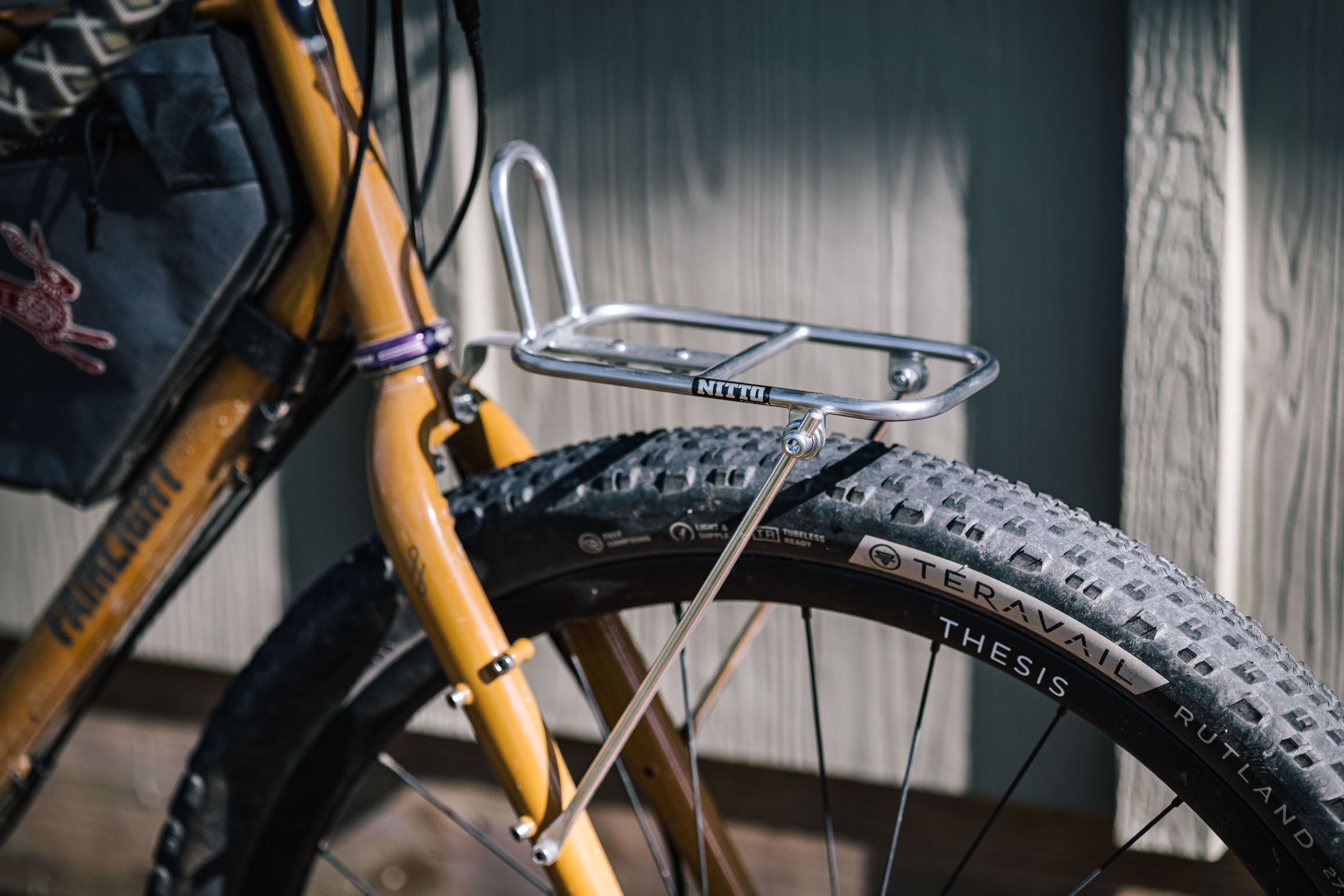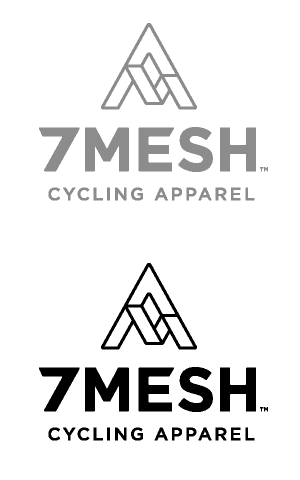Lucas’ Fairlight Faran 2.0 Build: All-Terrain Rando
Following four seasons of dialing in his Fairlight Faran 2.0 on various bikepacking trips around Europe, Lucas shares the build in its final form. Read on for a detailed parts list, his roundup of favorite handmade bags, and a collection of images shot along the way…
PUBLISHED Mar 24, 2022
Additional photos by Joshua Meissner (@joshm.de)
Perhaps more than any other production bike we’ve shared here on the site in recent years, the Faran 2.0 from UK-based Fairlight Cycles (@fairlightcycles) grabbed my attention when we first announced its release. Teased as a gorgeous raw frameset that showed off its exceptional build quality and unparalleled suite of features, I knew it’d likely be my next frame as soon as I saw it. And, after reading through the small brand’s extraordinarily thorough 73-page Design Notes booklet and exchanging a few emails with Fairlight co-founder and lead designer Dom Thomas to be sure it was right for me, I bought one and was eagerly anticipating its arrival at my doorstep in Berlin.
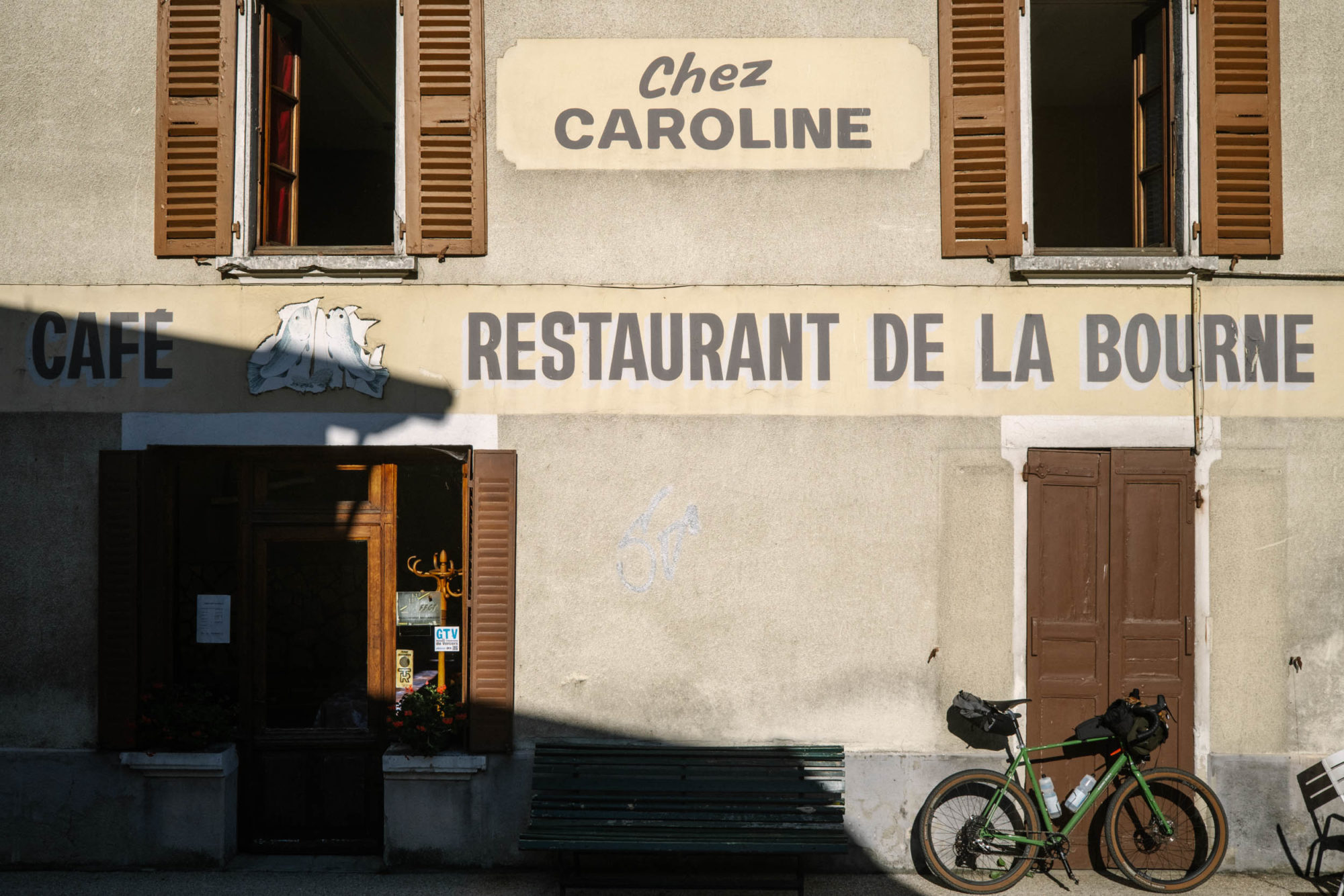
The essential items on my checklist for a new bike were a steel frame and fork, a versatile design that’d lend itself well to some experimentation down the road, a fit with a generous amount of stack, clearance for big tires and fenders together, and something made in Europe. This last one was an important consideration for an investment as significant as a frameset, as I’ve been trying to be more conscious about buying things made closer to home and by people with good working conditions. The Faran 2.0 frameset ticks all of these boxes and more, and it does so at what I consider to be a fair price of €1,040/$1,150 for buyers in the EU or €950/$1,045 outside of the EU/UK.
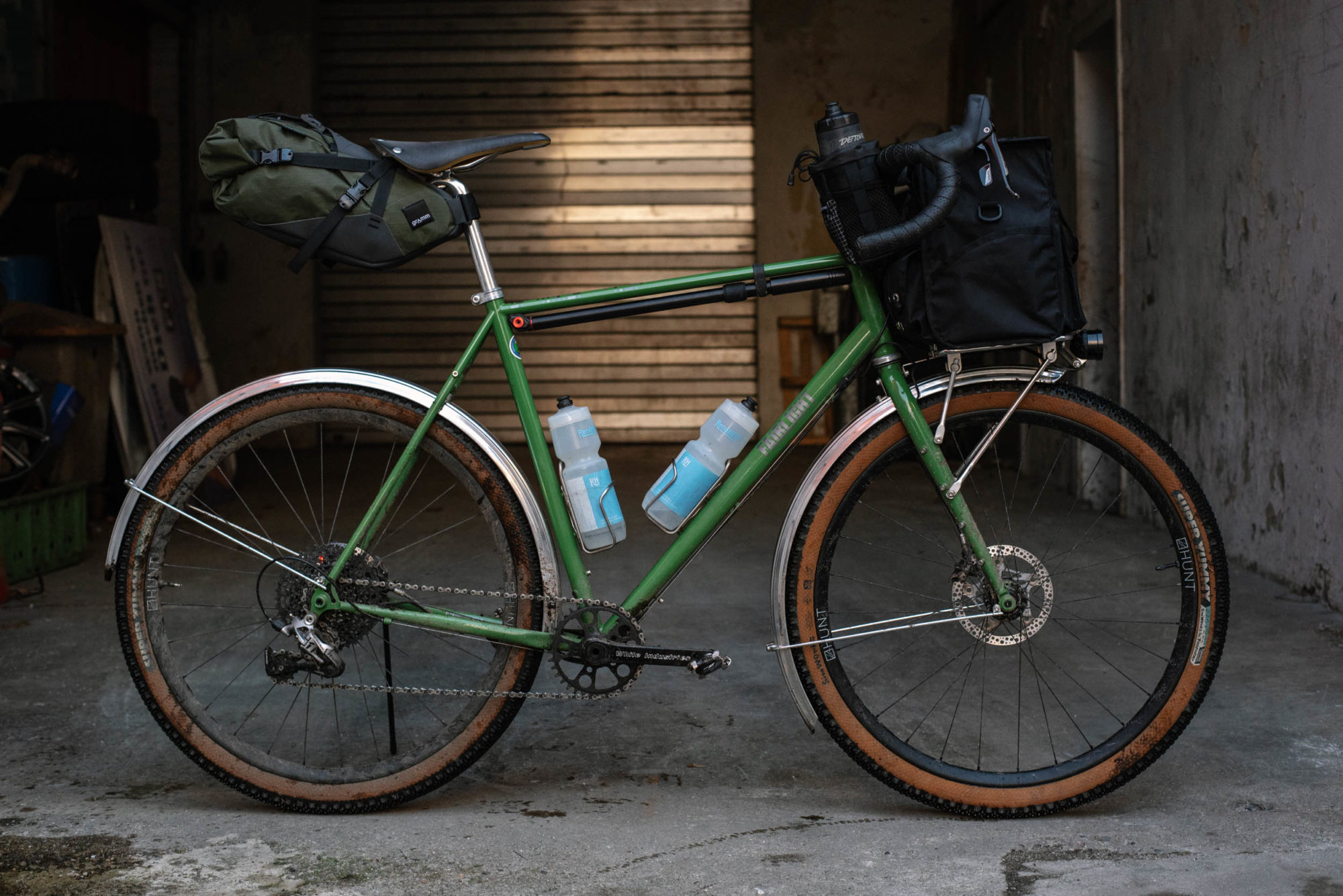
Fairlight describes the Faran 2.0 as “the sort of bike that you will become very attached to as you rack up the miles together. As the seasons and years pass, racks and cages will be bolted on or taken off, wheels & tyre sizes will be experimented with; its form, capability and loading capacity will evolve to reflect your riding style.” It’s funny because that was exactly my experience, and I’m only now seeing that description after a year of riding mine.
Since this post won’t be a review (Logan already published his in-depth analysis, linked in the related content grid below), I can cut to the chase and confirm that I have zero regrets about buying the Faran 2.0. It delivered on all of its promises, and I never once felt limited by it, whether on a weeklong trip through the French Alps, a 300-kilometer brevet from the Baltic Sea down to Berlin, or one of many mixed-terrain day rides and overnighters. It shines when loaded up; just point it and go. The fit is spot on, too. At around 6’3″ (190cm), the size 58 Tall puts me into a comfortable upright position for long days in the saddle.
As for drawbacks, the things I’m less enthused about all fit into a single paragraph. I wish the three-pack mounts on the fork weren’t angled backward, as I find the aesthetics quite irritating, even if they get the job done. Given the option, I’d also take a replaceable derailleur hanger, as I’m always a little nervous about the hanger when I pack it into a box or Rinko it for a train ride, and I’d rather be able to swap it out than try to hammer it back into place in the event of damage. Lastly, and I knew this going in, I don’t love the green paint, though that’s the most subjective of my qualms, and most people seem to like it a lot. As time and money allow, I think I’ll eventually repaint it or maybe have the paint stripped and put a clear coat over the top to match the look that first caught my eye.
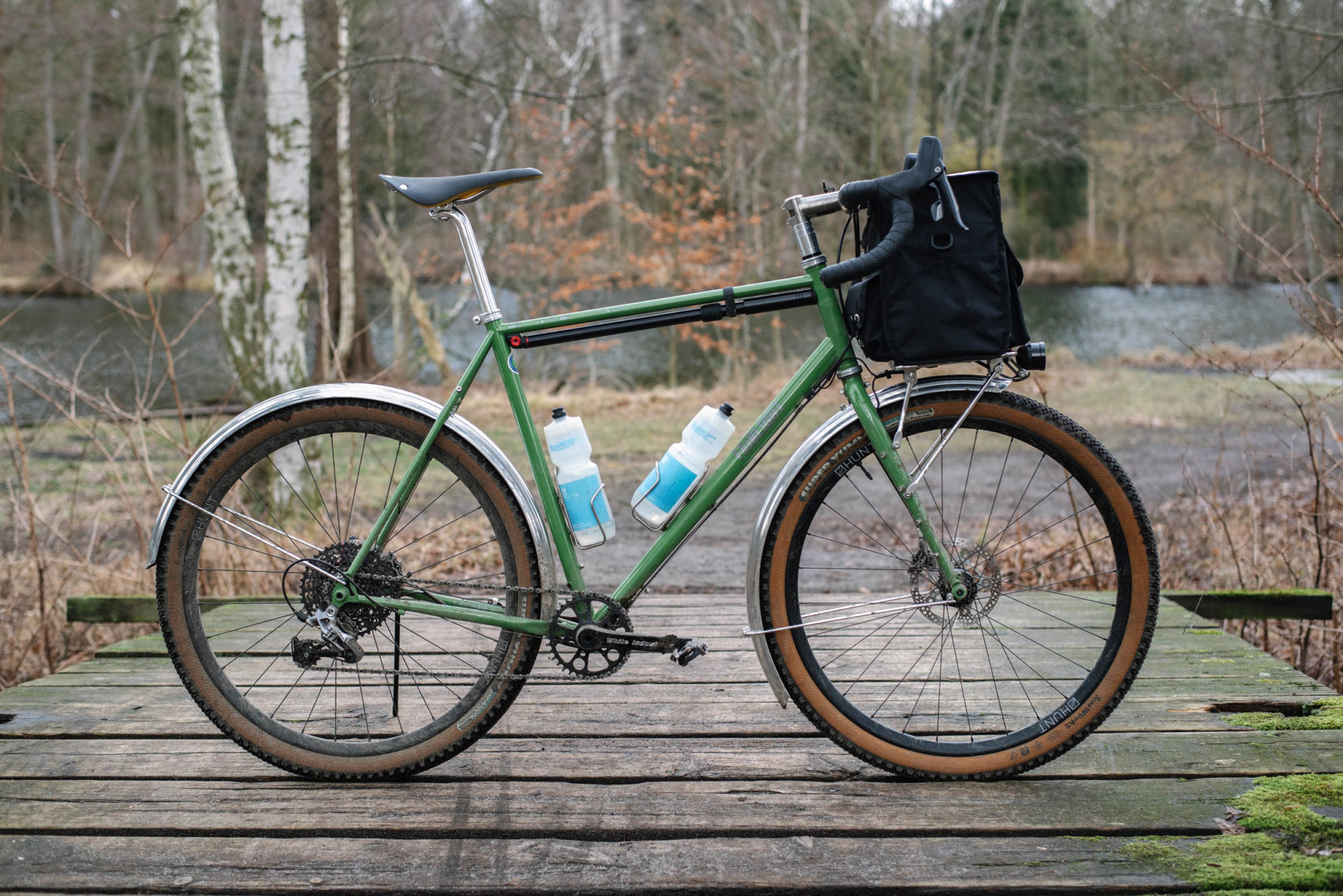
Build Kit
Many of the components that ended up on my Faran were swapped over from the Curve GXR that I built up back in 2019 and enjoyed riding but realized wasn’t quite the perfect fit for my needs. Namely, I couldn’t get the bars exactly where I wanted them given its long and short design, and I wanted a rigid steel fork that I could weigh down with a rack and/or a bunch of gear when needed. The Curve always felt like it wanted me to give it more gas, which isn’t really my style on big days out, though it’s a fantastic bike for the right rider.
For the most part, the existing build kit was well-suited to the bulk of the riding I knew I’d be doing, so getting this rig up and running with the help of my friends at The Gentle Jaunt (@thegentlejaunt) over beers one night was relatively quick and headache-free. From the onset, my main goal for the build was to select components that were going to be durable and trouble-free. I also wanted to balance value over unnecessary expenses (such as speccing it with SRAM Rival instead of Force and getting rid of some carbon bits) with investing in parts I knew would outlast me (such as the White Industries crankset and SON dynamo setup).
- Frame/Fork Fairlight Faran 2.0 (58T)
- Headset Hope Conventional
- Wheels Hunt Adventure Carbon Disc 650
- Tires SimWorks Super Yummy 27.5 x 2.2″
- Handlebar Salsa Cowchipper Carbon
- Brakes Hope RX4
- Shifters SRAM Rival
- Crankset White Industries G30 (36T, 175mm)
- Pedals Shimano XT
- Derailleur SRAM Rival, 11-Speed
- Cassette SRAM 10-42
- Saddle Brooks Cambium C17
- Seatpost Generic
- Seatpost Clamp Hope
- Stem Bearclaw Prototype, 85mm
- Front Rack Velo Orange Flat Pack Rack
- Front Bag Swift Industries Peregrine 15L
- Saddle Bag Gramm Dropper Seat Pack
- Lighting System SONdelux Dynamo Hub, SON Edelux II headlight, SON Rear Light
- Fenders Velo Orange 700c x 63mm Fluted (bent to fit)
- Accessories Silca Impero Ultimate frame pump, Wolf Tooth Morse Cages, Cheapo bell
Component Highlights
Going a little further into detail, the following parts all stood out to me for one reason or another. There are a few things I’d change about the build if I could do it again, but the components listed below all impressed me and felt worth highlighting individually:
SON Dynamo Hub and Lights
I can hardly imagine riding a travel bike without a dynamo setup these days. There’s a certain satisfaction that your lights flicking on every time you hop on your bike and start pedaling brings, not to mention the relief of never having to worry about charging anything to see or be seen. SON dynamo hubs are the gold standard in the category, and I think they’re well worth the initial investment if you’re planning to put in a lot of long days on the bike for years to come.
Salsa Cowchipper Carbon Handlebars
I ride drop bars almost exclusively and have tried dozens of them over the years, but I keep coming back to the Salsa Cowchipper. It strikes the ideal balance between too traditional and too flared and has a fairly conservative drop and reach that suit my riding style. I’ve been riding the carbon version for a few years now, but carbon always makes me a tad nervous, and I plan to swap them out for the cheaper aluminum Deluxe version in 50cm width before my next big trip.
White Industries G30 Crankset
Much has been written about the gorgeous hand-machined goods coming out of the White Industries workshop in Petaluma, California. I’m not sure there’s much I can add other than that, to my eye, they make some of the best-looking cranks and chainrings of all time. I appreciate the simplicity and solid feel of the G30 Cranks, and my only regret in buying them for this build is not going with silver.
Hope RX4 Brakes
On the subject of beautifully CNC machined bike bits, Hope’s UK-made RX4 (now RX4+) brakes stop supremely well and have great modulation. Plus, the intricately milled details have an alluring form that matches their function. My main knock against the RX4s is that I’ve always found them to be somewhat noisy, despite my best efforts to silence them, but I can’t think of another hydraulic brake I’d swap them for in terms of performance and good looks.
Velo Orange Flat Pack Rack
The Flat Pack Rack from Velo Orange is incredibly adaptable and has a uniquely versatile design. Its mid-sized demi-porteur platform works great for a variety of applications, too. I’ve run it with a basket, rando bag, and with stuff strapped directly to it. The Flat Pack Rack comes with four stays and two removable backstops to match your front bag configuration, and, as the name implies, it packs down into a compact, nearly flat package for travel. I lost the included fork crown attachment at some point and we had to get a little creative when mounting it, but it’s rock solid.
Silca Impero Ultimate Frame Pump
I love running a frame pump on rides that don’t require a frame bag, and Silca’s Impero Ultimate is my favorite of the bunch. They’re spendy, for sure, but they fall squarely in the “buy it once” category, and I’ve picked up a couple of them over the years to suit different frame sizes. The Impero has a hefty construction, a two-stage head gasket that creates a perfect seal, and is super comfortable in use. The one caveat with all frame pumps mounted under the top tube is that they can make picking up the bike to carry it over obstacles a bit more awkward, so if you’re anticipating a lot of hike-a-bike, you might think of mounting a pump elsewhere.
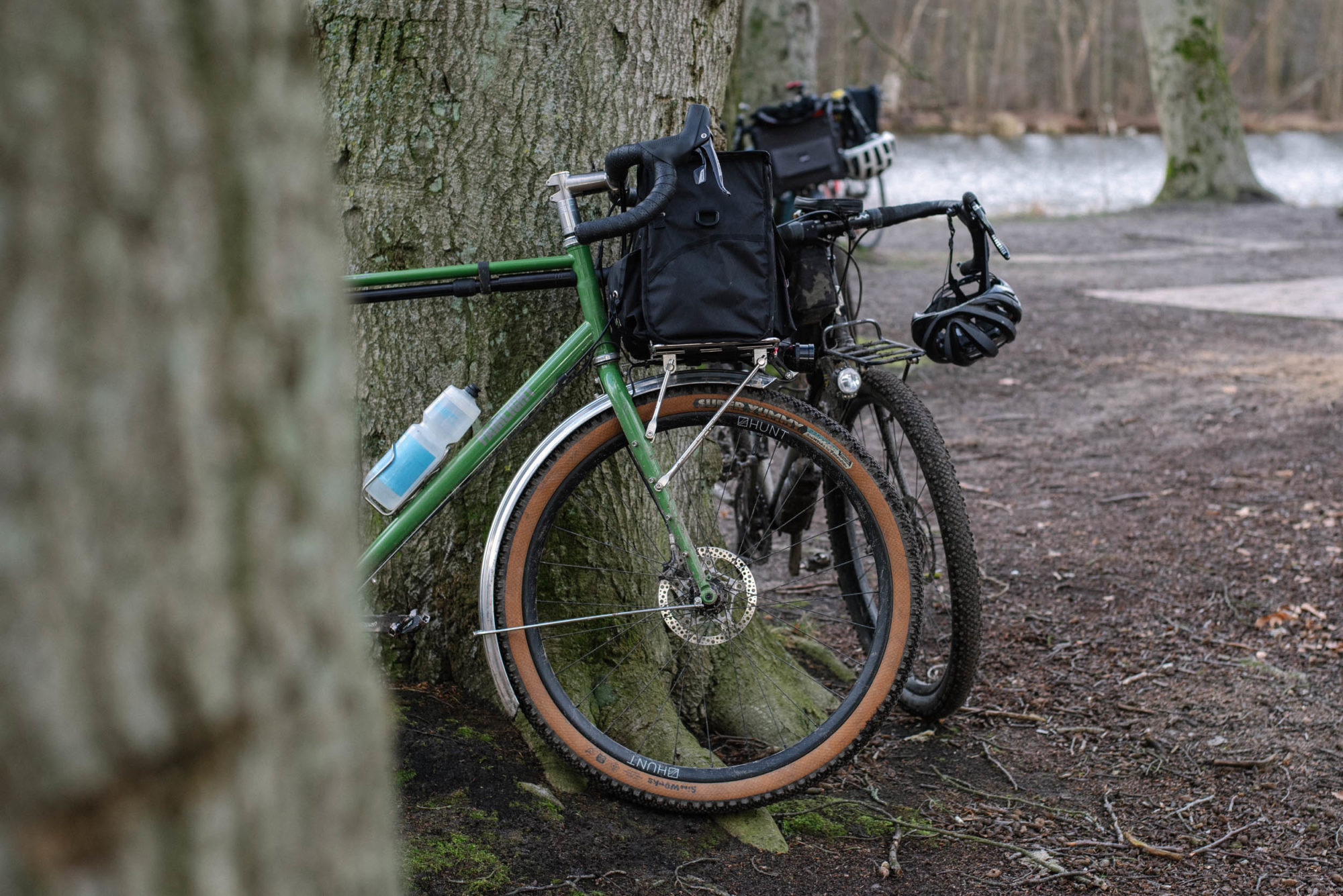
Handmade Bag Highlights
I’ve tried a bunch of bag configurations on the Faran 2.0 in the year I’ve been riding it: Helmut’s Werewolf, Ortlieb Fork-Packs, an Oveja Negra 1/2 Pack, a full suite of Paris-made Copra Bikepacking bags, the massive Atwater Marauder supported by a Hesson Labs T-Rack—the list goes on. I’ve finally arrived at what I think is the ultimate configuration for this rig, and it’s one that lends itself well to the full range of riding I’m interested in and able to get away for these days. Find a few highlights below:
Swift Industries Peregrine Randonneur Bag
My days of cramming stuff into a handlebar roll are well behind me, and Swift’s Peregrine is the centerpiece of this build. It’s easily among my all-time favorite rando-style bags, and it’s a joy to pack and use. The outer pockets are handy for quick-access items like tools and snacks, and the spacious internal compartment fits a ton of neatly organized gear. Plus, with a big frame and high bars, it’s nearly impossible to find a readymade rando bag that’s tall enough to look right, and the larger 15L Peregrine sits perfectly on the Faran. I’ll be publishing a full review of the Peregrine down the road, so stay tuned for that.
Gramm Tourpacking Dropper Seat Bag
Kristin, Suse, and Luisa at Gramm Tourpacking in Berlin are probably my favorite bag makers out there at the moment, and I’ve admired their colorful and clever bags for years. The relatively new 10L Dropper Seat Bag is the latest addition to the Faran, and my impressions from my first couple of trips with it are overwhelmingly positive. There’s an obsessive attention to detail that goes into everything coming out of the Gramm workshop, I love the deep olive color of the X-Pac VX21 fabric, and I’ve found that around 10L is the optimal seat pack size to help prevent me from overpacking.
Helmut Werewolf
Although I haven’t been using it since installing the Velo Orange rack, my go-to handlebar bag for the first six months or so was Helmut Werewolf top-loader. Made by Rodolphe Pascuito in his small studio in Cognin, France, it’s a 10-liter bag with classic styling and some thoughtful modern touches like its lovely X10 X-Pac construction, angled side pockets, water-resistant lining, and reflective accents. I brought to France for my tour through the Alps last summer, where it performed well enough to earn a permanent home on one of my bikes, even if it’s no longer on the Faran.
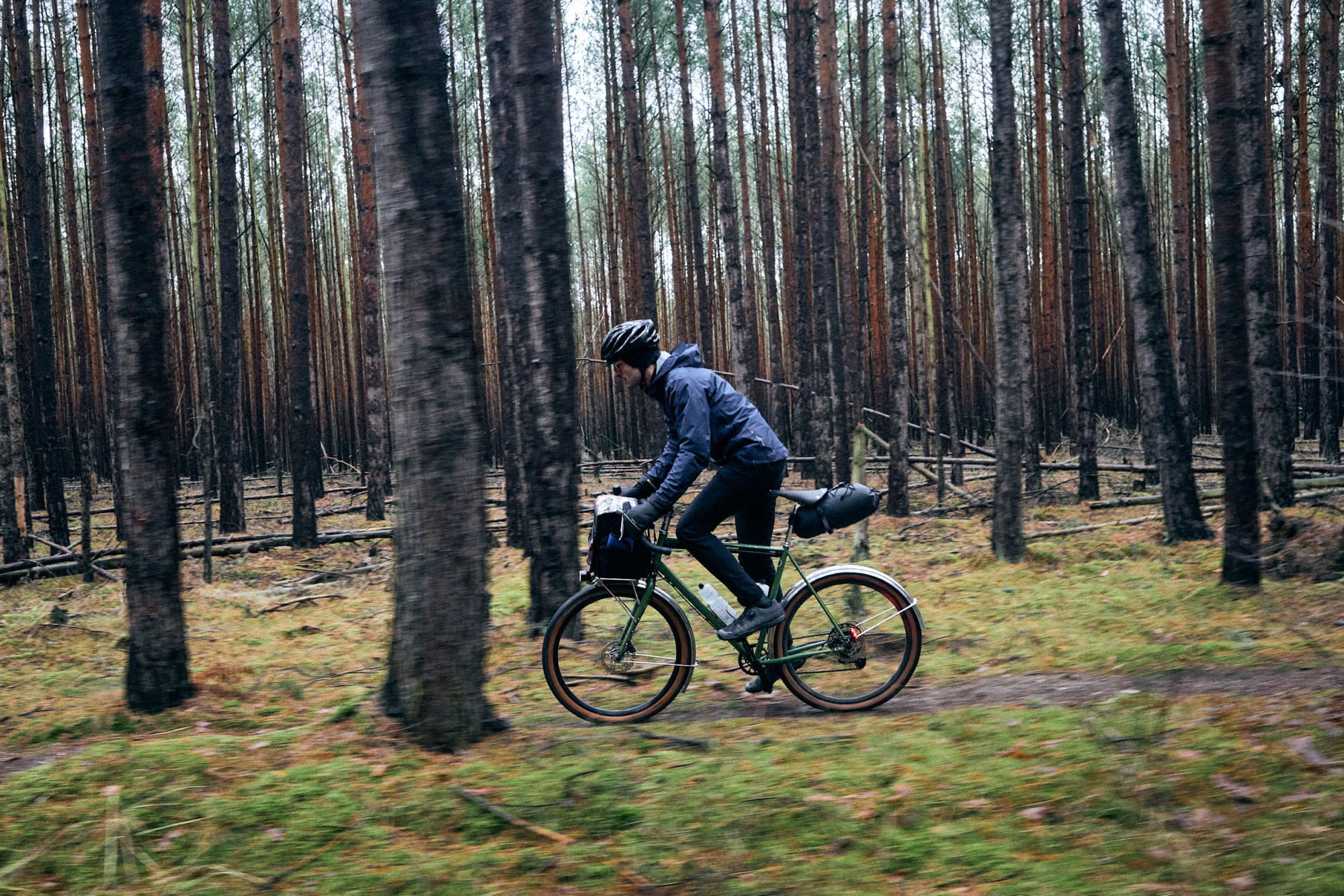
Parting Thoughts
If you’re still reading, you might be wondering when I’m going to address that tire-to-fender clearance. With a little bit of bending, those handsome 700C x 68mm Velo Orange fenders actually fit around the 650B x 2.2″ Super Yummy tires surprisingly well, though the clearance is really tight. I can get away with it only because the mud around Berlin is very sandy and doesn’t clump up, nothing like the infamous peanut butter mud found elsewhere, which would stop the Faran in its tracks with such minimal space. With future rides further afield in mind, the fenders will stay, but I’ll be swapping out the tires for something a little smaller—likely around 2.0 and with a semi-slick tread, maybe the 650B x 53mm Panaracer GravelKing SK Knobby?
Come summer, I’ll be heading back down to the Dolomites for a 10-day mixed terrain tour that’ll include a lot of sleepy paved roads between villages with some spicy off-road detours thrown in for good measure, and this bike is the natural choice for that trip. Other than changing out the tires and handlebars and adding a custom half-frame bag and third water bottle, I don’t know that there’s anything else I’d mess with. After a year of mixing up bags and making minor tweaks here and there, the Faran has arrived at an incredibly capable “final” (who am I kidding?) form, and I’m glad to have made the leap and bought one sight unseen.
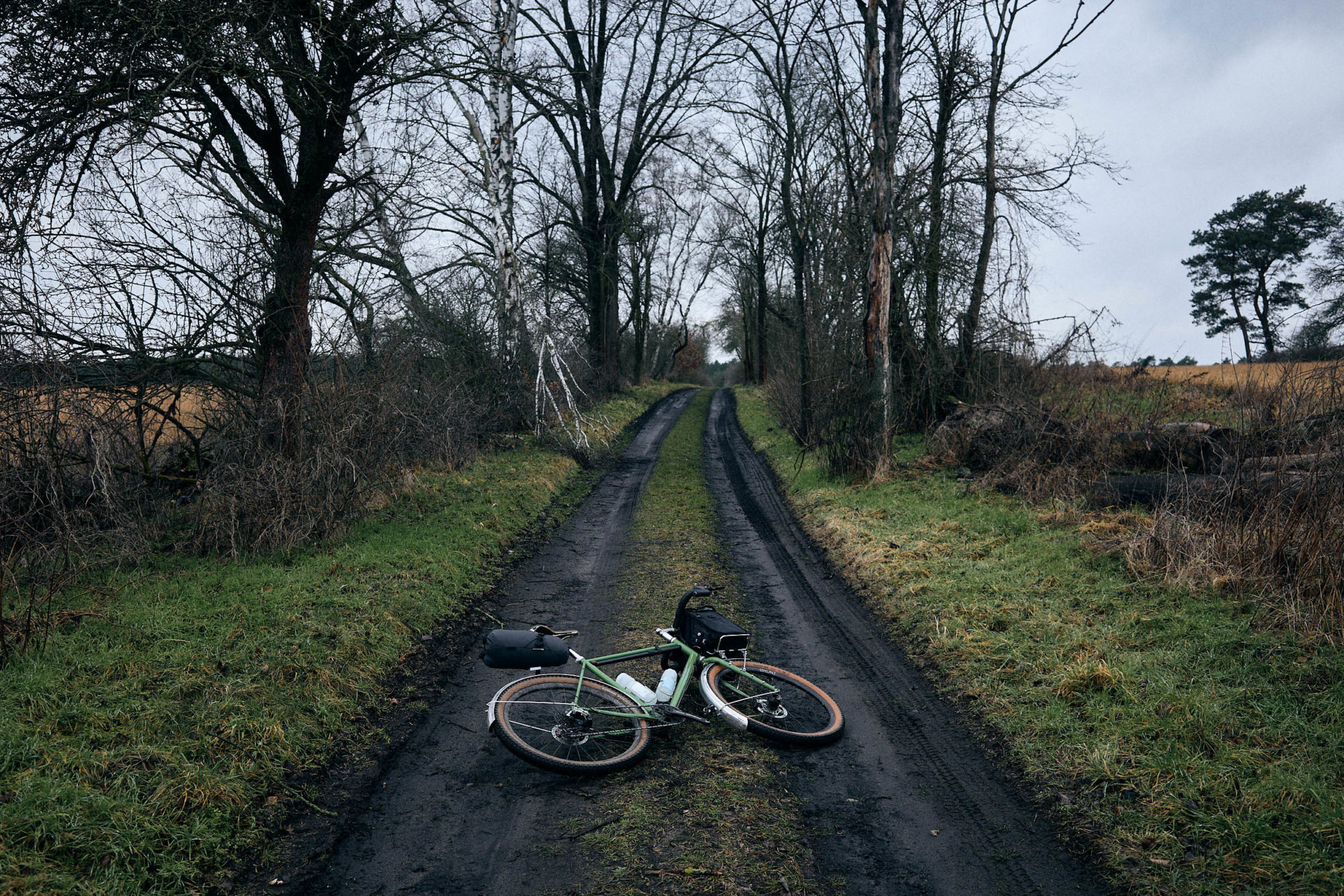
Related Content
Make sure to dig into these related articles for more info...
Please keep the conversation civil, constructive, and inclusive, or your comment will be removed.






